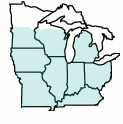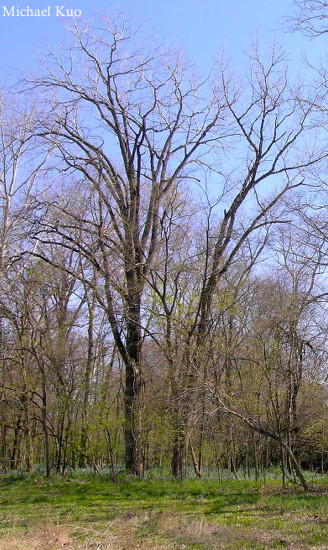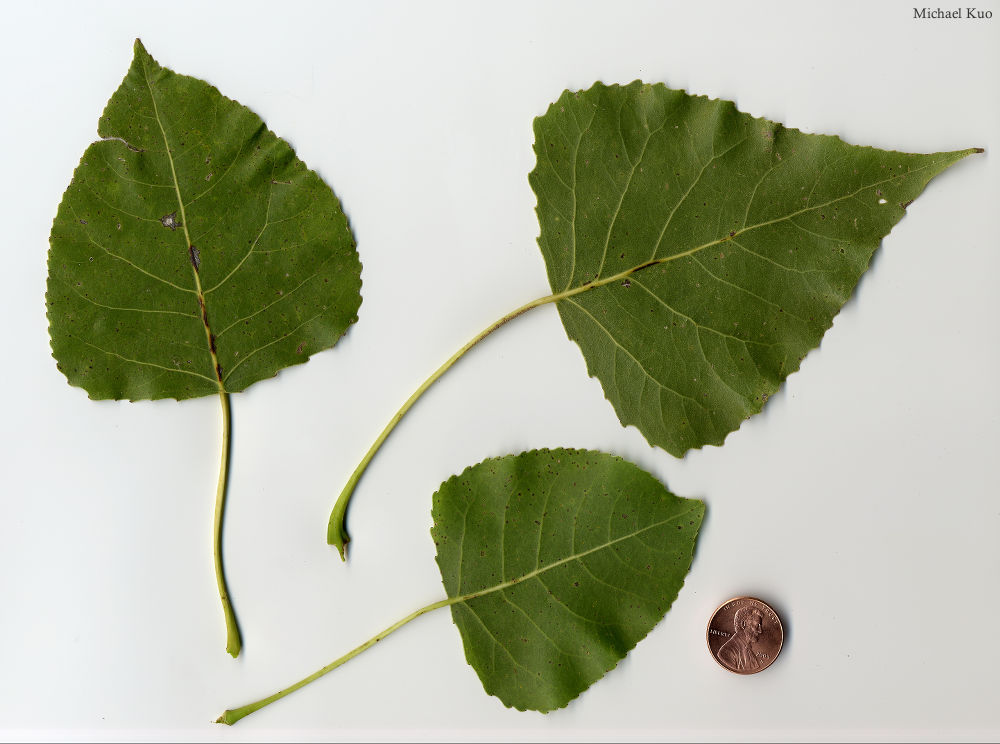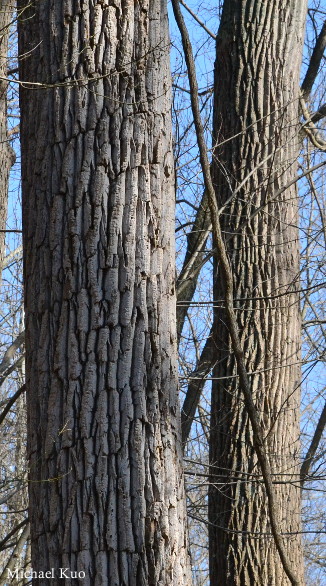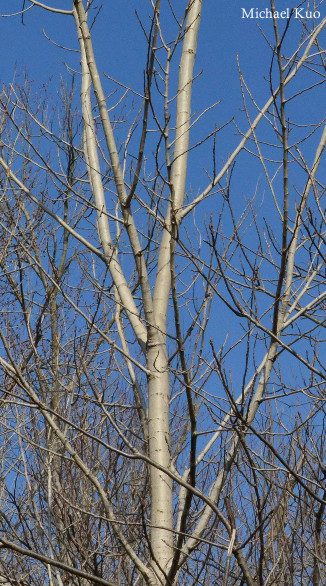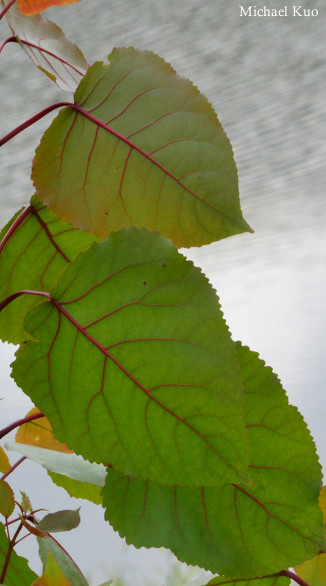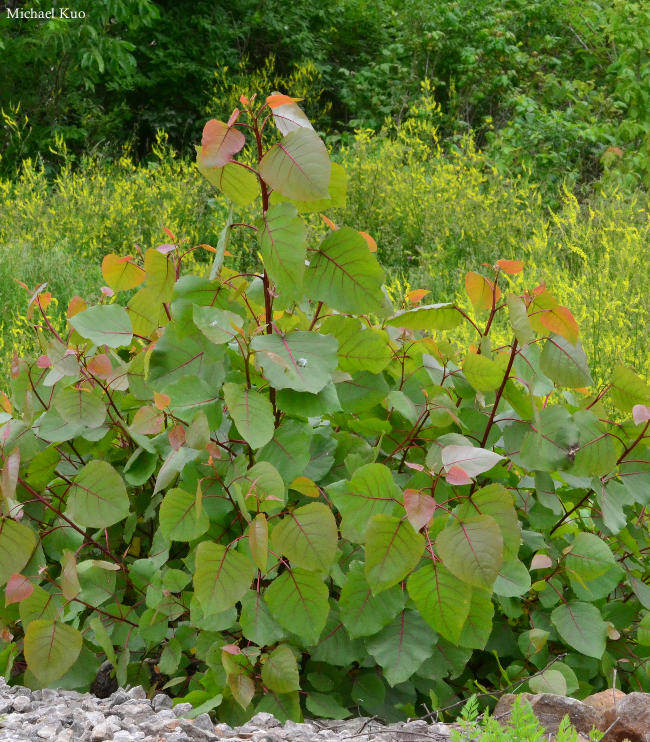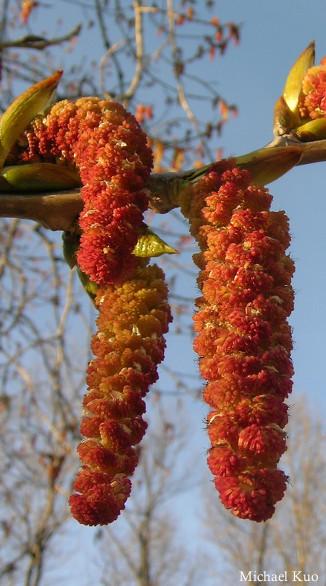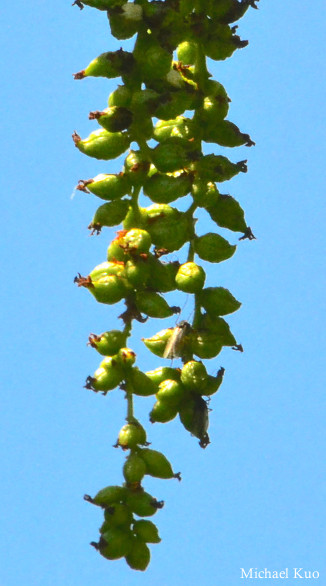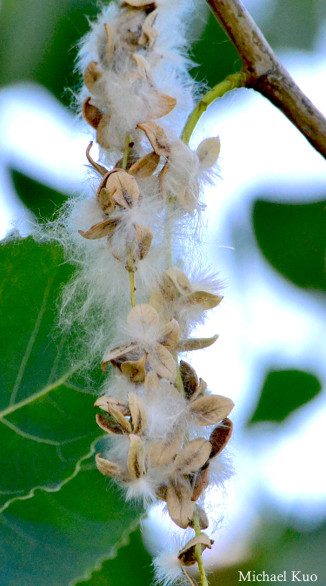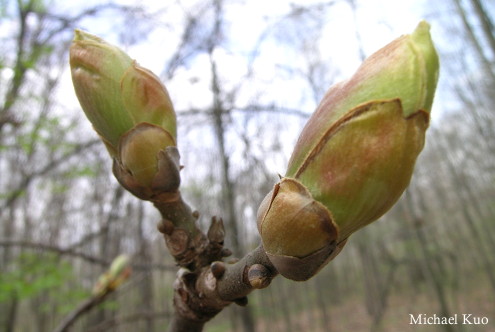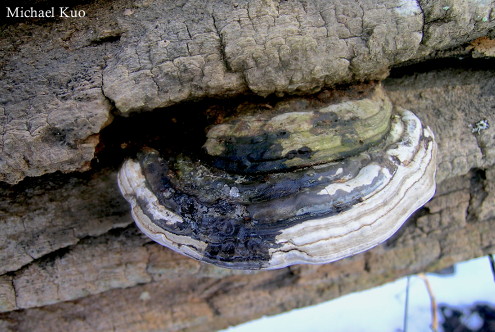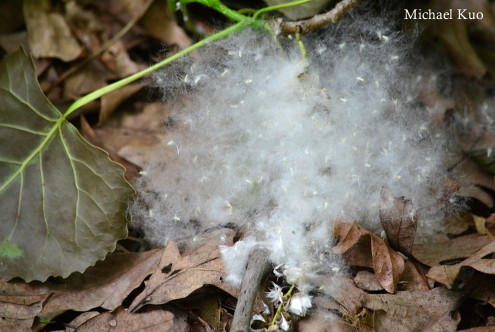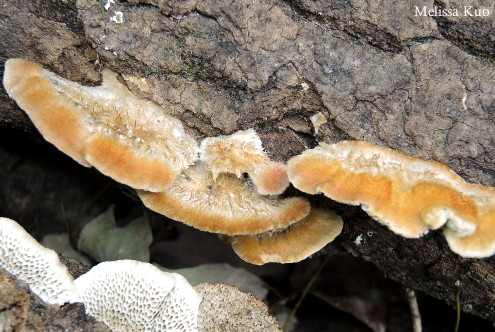 Populus deltoides (eastern cottonwood) |
 twig |
|
In late spring, when bluebells are flowering and big, yellow morels appear in riverine ecosystems to signal the end of morel season, Populus deltoides is at its finest. Its massive, spreading crowns climb into the clear blue spring sky, and the enormous trunks are easier to see at this time of year, rising higher and higher. Cottonwoods can reach more than 100 feet in height, with trunks 6 feet across. Ironically, given their massive size, they are short-lived, typically lasting 75-100 years. In order to accomplish such mass in such a short time period, cottonwoods grow at astounding rates—up to 5 feet in a year. As the temperatures begin to climb in May and June, the cottonwood lives up to its common name, creating catkins (and spring allergies!) and, eventually, releasing milkweed-like seeds that seem to cover everything with whitish, spider-web-ish down. Anglers curse the cottonwoods at this time of year; just as the crappie are schooling and the largemouth bass come up to their beds, Populus deltoides covers lakes and ponds with its cotton, clogging spinning reels and fouling up line. In summer, cottonwoods—at least those in cottonwood-sycamore lowlands—are less accessible, surrounded as they usually are by nettles and other inhospitable undergrowth. Huge dead cottonwoods, however, often fall across or near trails, allowing hikers to see how the dead trees become hosts for many insects and fungi (see below), as well as fodder for woodpeckers. Summer is a good time to listen to cottonwoods: like their close relatives the aspens, their leaves have long, skinny leaf-stems that are somewhat flattened on an axis perpendicular to the plane of the leaf, allowing them to flutter in the slightest breeze. Unlike the silvery, high-pitched rustle of the aspens, however, the cottonwood song is deeper, "like the rustle of heavy skirts, like distant pattering applause" (Peattie 1948). This video, taken on a hot summer day in Illinois during a stiff breeze, demonstrates the fluttering leaves and the sound. In fall the cottonwood turns deep yellow, losing its heavy leaves one by one, creating a thick layer on the ground, leaving the tree stark and dark gray for the winter. |
|
|
|
Stature. Cottonwoods regularly reach 100 feet or more in height, with trunks up to 6 feet across; crowns are spreading and rounded. Bark. On young trees the bark is smooth and whitish or pale greenish, reminiscent of the bark of the closely related aspens. However, furrows soon begin to develop from the base upwards, and cottonwoods soon demonstrate very deeply furrowed, gray bark. Leaves. Leaves are more or less triangular, with tapered points, measuring 3—9 inches long (leaves tend to be larger in the southern Midwest than in the north). The edges are toothed with 40—50 rounded, large teeth. The surface is bald on both sides; the color is dark green above, with paler green underleaves. The leaf-stems are up to 4 inches long and flattened; they are bald and green to yellowish green. There are 3—5 small glands at the point of attachment to the twig. Sapling leaves often feature red leaf-stems and veins. Twigs. Cottonwood twigs are yellow green, maturing to gray. They feature many small, pale bumps and dots. Leaf scars are alternate and vaguely triangular, with 3 bundle traces. Flowers, fruits, and seeds. Catkins 5—8 inches long are produced in April and May; male (staminate) catkins are red and female (pistillate) catkins are green. Fruits are clustered, ellipsoid, and green, measuring under half an inch long. The fruits rupture at the end, releasing tiny whitish to brownish seeds attached to cottony whitish fuzz. Similar trees. Young cottonwoods with smooth bark could be mistaken for aspens (Populus tremuloides or Populus grandidentata), but aspens have daintier leaves and distinctive bark scars that look like large "eyes," along with frequent lines of horizontal bumps in the bark. Plains cottonwood (Populus deltoides ssp. monilifera) is absent in the Midwest (with the possible exception of far western Iowa and Missouri); it is a subspecies of eastern cottonwood that has leaves with 10—30 teeth, and only 1—2 glands where the leaf-stem meets the twig.
|
|
|
|
|
|
|
|
|
|
|
|
|
|
|
|
|
|
References: Harlow 1946, Peattie 1948, Miller & Jaques 1978, Kricher & Morrison 1988, Preston 1989, Jones 2005, Mohlenbrock 2006, Kershaw 2007, Sibley 2009, Voss & Reznicek 2012. Kuo, Michael & Melissa Kuo (July, 2017). Populus deltoides (eastern cottonwood). Retrieved from the midwestnaturalist.com website: www.midwestnaturalist.com/populus_deltoides.html All text and images © , midwestnaturalist.com. |
